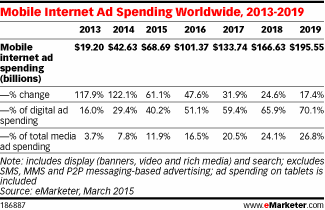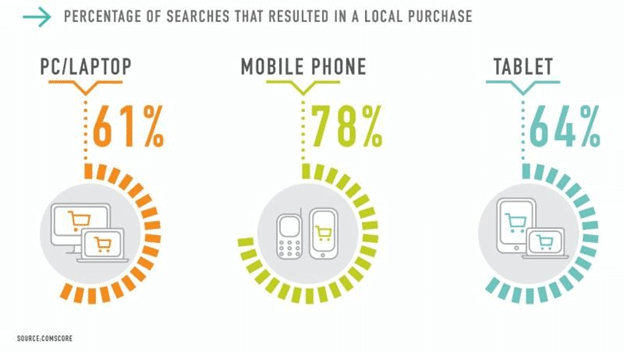
5 Best Practices for Apple Search Ads
Posted on July 3rd, 2024
Are you leveraging Apple Search Ads the right way? Take a look at these recommendations to optimize your paid campaigns and target the right users.

To create an app that makes money, mobile app publishers and developers need a validated idea, and a plan for acquiring and monetizing users. We have covered user acquisition in various posts, from optimizing an app store listing to paid Facebook campaigns. Here, we will explore common monetization methods for mobile apps and trends likely to impact how apps make money.
Revenues from app purchases is generally referred to as "app store revenue". This is the number Apple and Google report during their developer conferences, saying "We have paid $10b to developers over last 12 months" for example. Both Apple and Google take 30% of every purchase, leaving the publisher with 70% of anything sold from within the app. 30% may sound like a lot, but do provide some significant services. They manage global distribution to users who have linked payment methods (important), and they receive payments in multiple currencies and geographies and then convert these global currencies into your home currency and make payments monthly. Using 2014 global app store revenues, Apple accounted for $15 billion, while Google Play accounted for $9 billion. App store revenues alone generated more revenue for developers in 2014 than all of Hollywood ($17b vs $10b).
2016 is expected to be a big year for mobile advertising.
2015 mobile ad spend is estimated to come in just under $70b globally, and is expected to pass $100 b and 50% of digital ad spend in 2016.  In the US alone, the gap between usage and advertising budgets allocated to mobile is estimated to be $25b - and that was for 2014.
In the US alone, the gap between usage and advertising budgets allocated to mobile is estimated to be $25b - and that was for 2014.  It is no wonder that 48% of developers reported using advertising in their apps, making it the most
popular mobile app monetization model according to Vision Mobile's "Developer Economics - State of Developer Nation" report. Between paid apps (and subscriptions), in app purchases and advertising - mobile apps are expected to generate well over $100b in 2015 alone. But there is an exploding mobile app monetization model already driving more than 2x app store revenues and is just getting started.....
It is no wonder that 48% of developers reported using advertising in their apps, making it the most
popular mobile app monetization model according to Vision Mobile's "Developer Economics - State of Developer Nation" report. Between paid apps (and subscriptions), in app purchases and advertising - mobile apps are expected to generate well over $100b in 2015 alone. But there is an exploding mobile app monetization model already driving more than 2x app store revenues and is just getting started.....
Consumers spend more time shopping on mobile devices than desktops and accounted for 60% of online shopping in Q4 2014. According to data from comScore, 78% of mobile searches resulted in a purchase.
Wow.  Mobile share of ecommerce transactions (the final step in the sales funnel) for Q1 2015 are reportedly 15.4%, up almost 40% compared to Q3 2014. Countries like Japan and South Korea show 50% of their ecommerce transactions are coming from mobile devices. For comparison, global ecommerce sales are estimated at $1.5 trillion, just 6.5% of all sales. While mobile contributes significantly to (and influences) the shopping experience, mobile transactions
are a comparatively miniscule $230b. While mobile device usage, mobile app usage, and app store revenues are growing
every quarter, the biggest opportunity in mobile apps in 2015 and beyond is selling products and services through a mobile app. Mobile apps like ReMix
from Polyvore, Gilt and Wish
(valued at $3 billion dollars) show how creating unique ways for users to engage with products and services on a mobile device is an enormously lucrative approach.
Mobile share of ecommerce transactions (the final step in the sales funnel) for Q1 2015 are reportedly 15.4%, up almost 40% compared to Q3 2014. Countries like Japan and South Korea show 50% of their ecommerce transactions are coming from mobile devices. For comparison, global ecommerce sales are estimated at $1.5 trillion, just 6.5% of all sales. While mobile contributes significantly to (and influences) the shopping experience, mobile transactions
are a comparatively miniscule $230b. While mobile device usage, mobile app usage, and app store revenues are growing
every quarter, the biggest opportunity in mobile apps in 2015 and beyond is selling products and services through a mobile app. Mobile apps like ReMix
from Polyvore, Gilt and Wish
(valued at $3 billion dollars) show how creating unique ways for users to engage with products and services on a mobile device is an enormously lucrative approach.

Are you leveraging Apple Search Ads the right way? Take a look at these recommendations to optimize your paid campaigns and target the right users.

Ghostly happenings are among us... and in your app listing too? If you aren't leveraging the power of app seasonality to make relevant tweaks to your store listing you're leaving precious engagement and conversions on the table.

Developers on the iOS App Store should plan in advance of the upcoming Holiday Schedule to allow enough time for apps to get approved during the busy holidays.